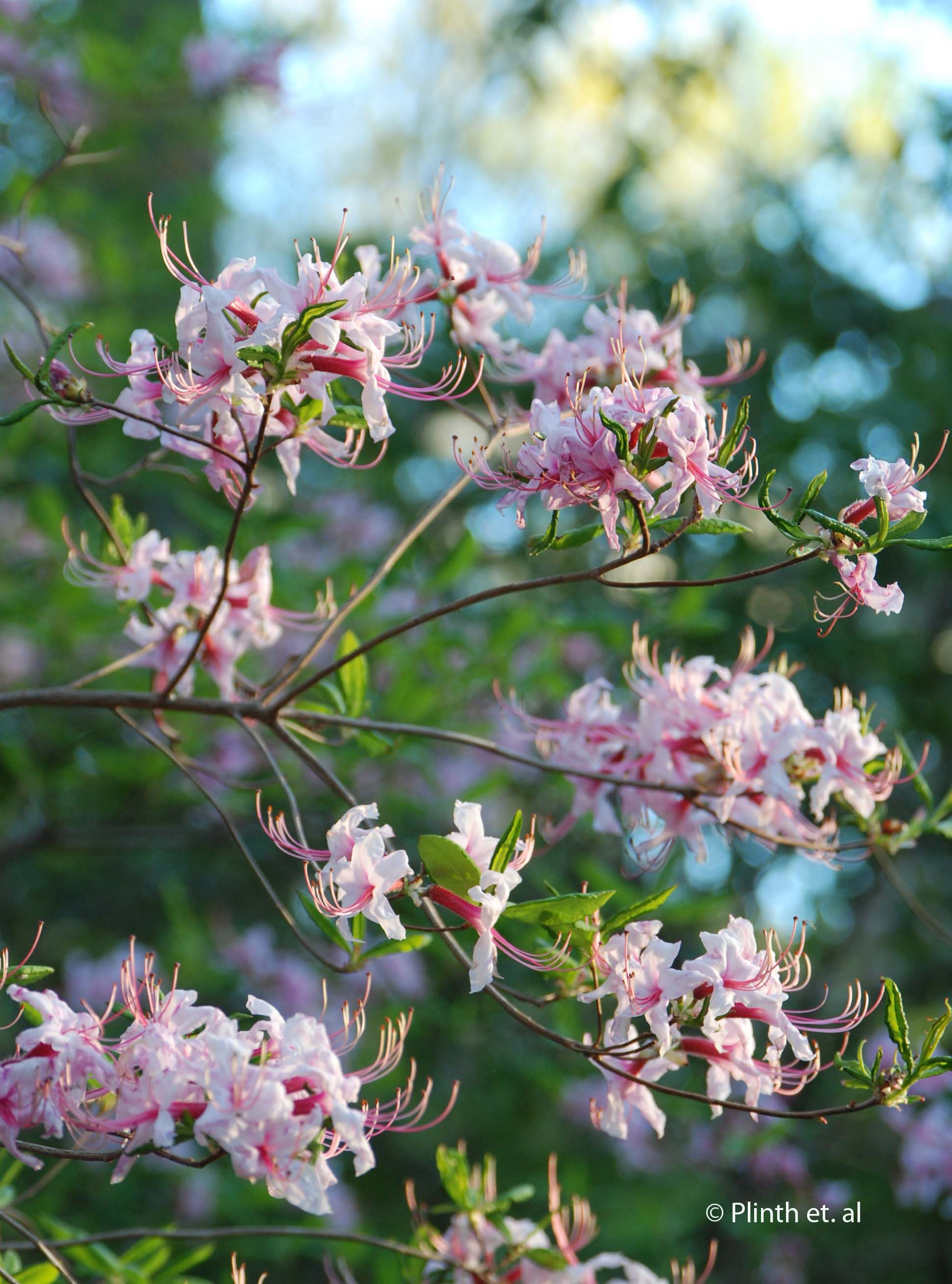May brings the first flowering presence from our native deciduous azaleas in woodlands along the East Coast U.S. Their delicacy is a welcome antidote to the brasher, bolder evergreen azaleas that often grace the American garden, and sadly such subtlety translates to less popularity, despite that our shadier gardens are more accommodating for their cultivation than that of evergreen ones wanting more sun. The British gardeners were rather enthusiastic about these deciduous azaleas especially during the mid 18th century when a fervent following for North American plants saw repeated trans-Atlantic shipments. One of the first deciduous azaleas sent to England from North America was Rhododendron periclymenoides (pinxterbloom azalea). Calling it 'red shrub honeysuckle'', the Pennsylvanian botanist John Bartram dispatched this species, along with R. canescens and R. viscosum to his British collaborator and sponsor Peter Collinson. 'Red Shrub honeysuckle' never became adopted as the common name, and pinxterbloom azalea took preference as Pinxter is Dutch for Pentescost (seventh Sunday after Easter), an accurate timing of the flowers.
Each pink flower (1 1/2" wide) is accentuated by five elongated stamens, tapering outwards like butterfly antennae. In fact, the flowering clusters can be likened to butterflies congregating to feed. Because the leaves are small upon emerging, they do not detract from the floral display. Rhododendron periclymenoides enjoys soft filtered light and moist soil typical of open woodlands. It resents heavy clay soil, therefore amending the soil well or planting in raised beds is recommended. Loose and airy, the habit makes R. periclymenoides a see-thru shrub in the woodland garden. It looks best sprinkled here and there rather than a singular specimen, towering from carpets of white foamflowers (Tiarella), trilliums (Trillium), and ferns. Prune lightly to thin out some suckers as R. periclymenoides can be stoloniferous.
~E



